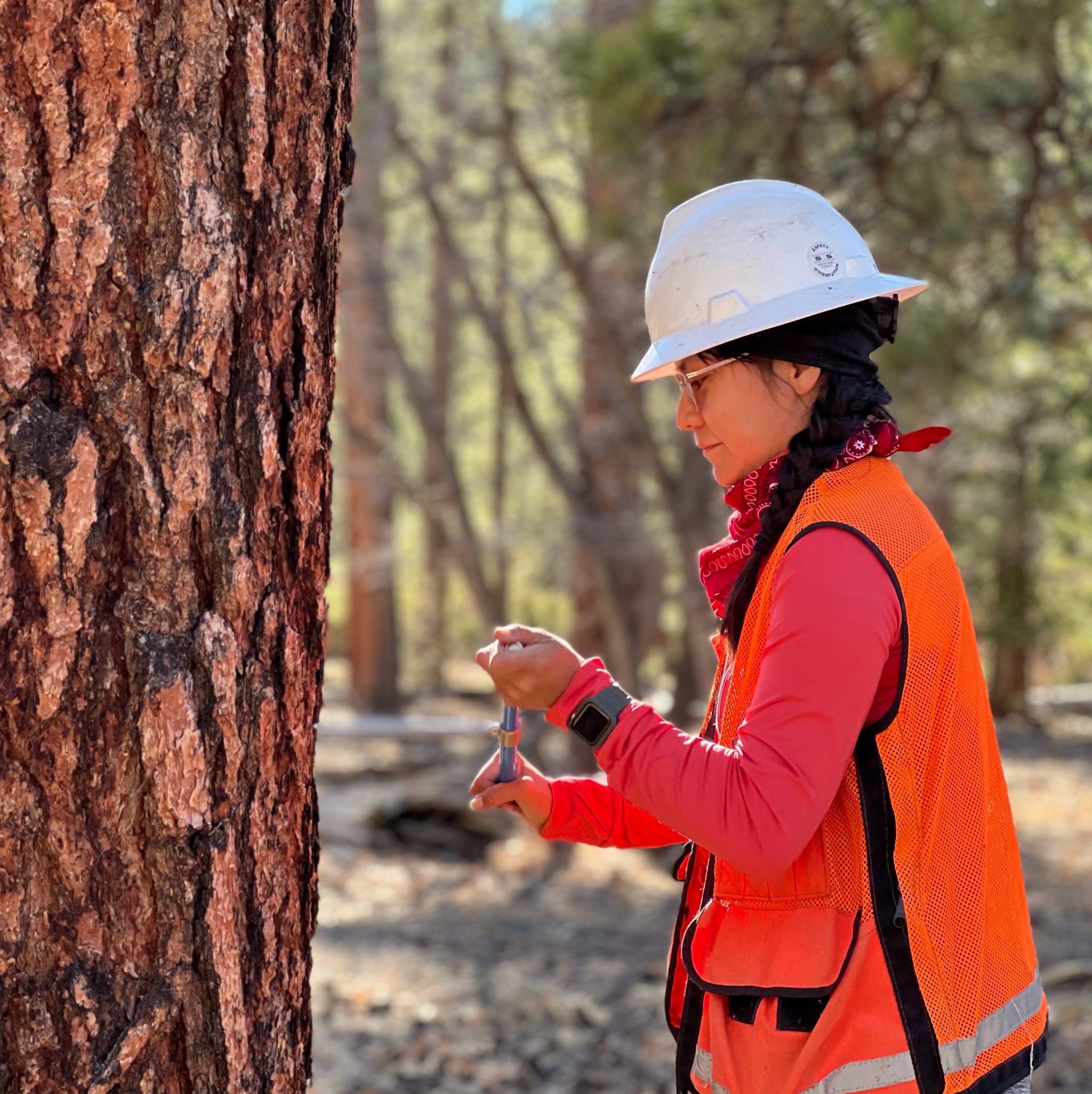Some information may be outdated.
Native communities have land management objectives that stem from traditional ecological knowledge and deep connections to the land. Jaime Yazzie has been asking how traditional knowledge held within her Diné community can inform management in Navajo Nation forests. Yazzie’s work on Tribal forests emphasizes Diné concepts of kinship. Here, she explains how she works to incorporate these concepts into management objectives.
Science Moab: What does your work look like, and how do relationships with the forest affect it?
Yazzie: I think it starts really with a lot of connection with the community and with the tribal forest management department. Through my undergrad education and as a graduate student, I noticed a lack of knowledge about the Diné forest within scientific literature. What I wanted to do was provide something for the community so that they can really look at and see themselves in a scientific space, emphasizing our own ways of knowing our own livelihoods.
Tribes hold Indigenous knowledge systems that are based on intimate observations of earth, space, and water, which helped us over centuries to build a connection to landscapes and seascapes. I approach different issues with Indigenous methodologies of respect, responsibility, and reciprocity. It’s not about centering the needs of an outside academic university, it’s centering the needs of the community, then the needs of the tribal decision-makers.
A lot of the work I do is laying that groundwork even before an objective is created for the project, and upholding the importance of the Indigenous perspective on that whole project. I really push the principal investigators to think about how the data will be applied, then look at the outcomes and the deliverables so that there is a reciprocal relationship within these projects.
Science Moab: What are some values of Diné communities in forest management?
Yazzie: There are a lot of diverse values and concerns about the forest when engaging with the community, whether that’s a complex history of forest management with the Navajo Nation Forestry Department, or the community currently prioritizing cultural and spiritual connections to the land. The struggle is really connecting these multiple layers of management.
A lot of what I hear from the community is that the emphasis needs to be based on kinship, harmony, and balance, and it’s a real struggle to connect those ideas directly to a management strategy. A lot of it is really reclaiming our own Indigenous knowledge and stewardship and emphasizing that connection to the land. A lot is community-based in relationship building, emphasizing the care and love that we have for the forest.
When talking about these things, we educate the younger generation that this is not just a natural resource, this forest is a community. The connection to us is not just through air purification or firewood, it is a continuation of the relationship that it had with our ancestors. In a management strategy, we need to expand the way we perceive the land, the sky, and non-human beings and push that forward, not only through government policies but within our communities and families.
Science Moab: What kind of feedback do you get from people when you present these ideas about thinking about land and management differently?
Yazzie: There’s a variety of responses depending on the audience. I do want to emphasize that a lot of what I do is not just for science itself, it’s for the community. I really emphasize to principal investigators the need to acknowledge and really honor the foresters that have been there for 40+ years, the forest managers that have been there, and the community and their knowledge of their forests. I feel that community members and academic researchers have been very receptive because tribal nations really have the capacity to build climate resilience, adaptation solutions, education plans, and curriculum.
Science Moab: How is climate resiliency being addressed using Indigenous knowledge and methodologies?
Yazzie: Tribes are really at an advantage to cultivate a holistic forest management strategy to tackle climate change. In looking at climate change projections and how forests might change, there were dire outcomes, which emphasized the need to address this through management. There are a lot of different challenges that southwestern forests will face with climate change, such as temperature increases and a lack of winter precipitation. To address climate change, we must manage the forest to improve resiliency, balance that with the risk of fire and the impact of long-term drought, and develop strategies to address the forest community’s challenges, like thinning landscapes or having prescribed burns.
Indigenous scholars and communities across the world are reclaiming research practices to better serve their communities and center their needs. A study I always go back to is a global assessment of Indigenous community engagement and climate research, which looked at the dynamic of engagement within climate research and categorized it on a scale of extractive to Indigenous. It details how each study engaged with the Indigenous community to highlight that we need to move away from extractive research practices. This really puts forth a different way of knowing, and provides that space for tribes to really create those solutions through interdisciplinary management.
Science Moab is a nonprofit dedicated to engaging community members and visitors with the science happening in Southeast Utah and the Colorado Plateau. To learn more and listen to the rest of this interview, visit www.sciencemoab.org/radio. This interview has been edited for clarity.
Appreciate the coverage? Help keep local news alive.
Chip in to support the Moab Sun News.





